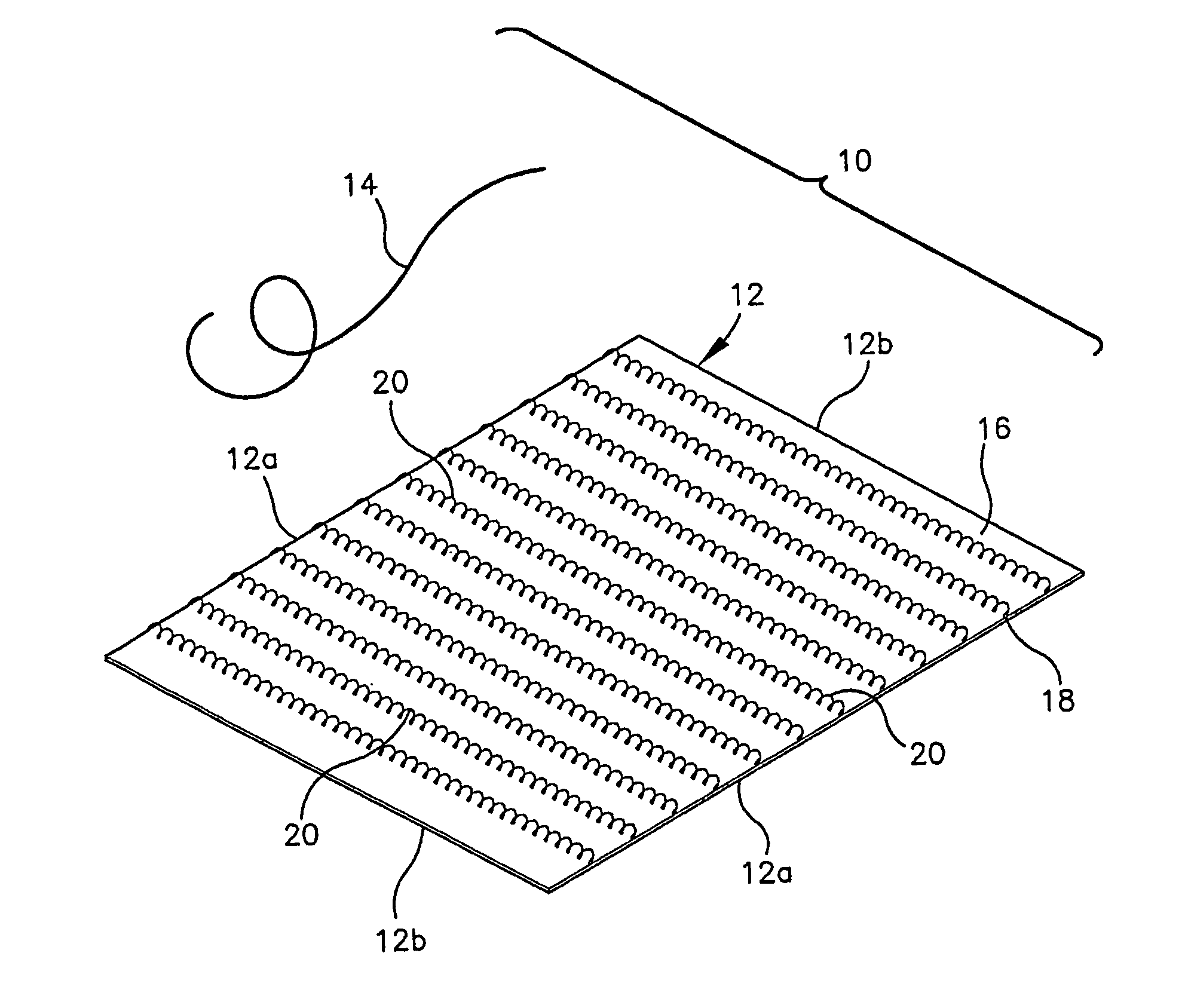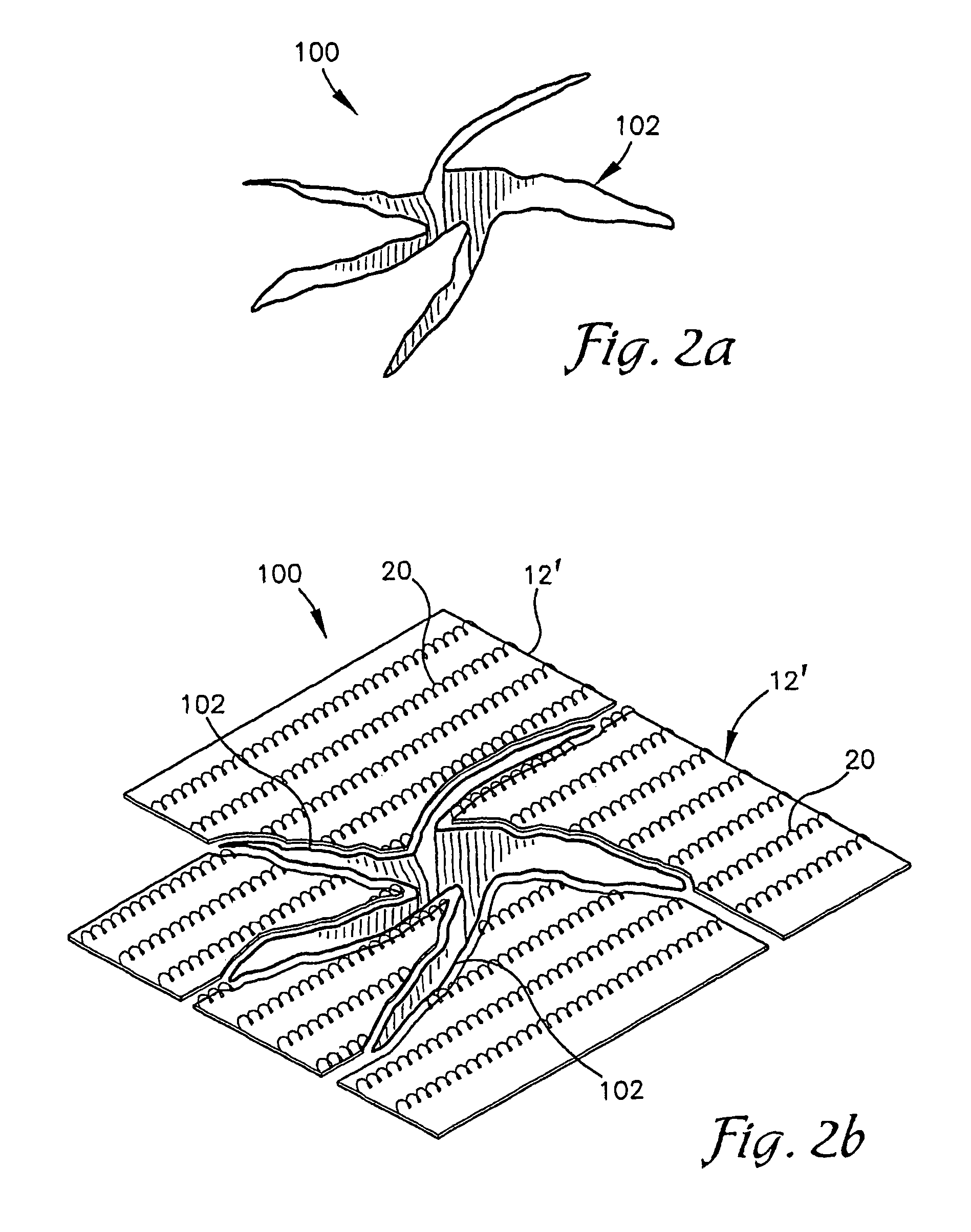Atraumatic wound care and closure system
a wound care and closure technology, applied in the field of articles and systems, can solve the problems of affecting the healing effect of wounds, so as to prevent the dislodgement of the device from the patient, and add stability and security.
- Summary
- Abstract
- Description
- Claims
- Application Information
AI Technical Summary
Benefits of technology
Problems solved by technology
Method used
Image
Examples
Embodiment Construction
[0029]The present disclosure is concerned with a wound care and / or closure system for atraumatic care and / or closure of wounds. The term “atraumatic” is used herein to denote that the wound care and / or closure system involves no penetration or piercing of the subject's tissue, for example with a needle, staples, or other conventional suturing or wound closure techniques. With reference to FIG. 1, the wound care and / or closure system 10 comprises an article substrate 12 and optionally a thread 14. The substrate 12 comprises first and second opposing major surfaces, referred to herein as a front surface 16 and a back surface 18, respectively. The substrate 12 comprises a continuous web or sheet that is flexible in all directions and conformal to underlying surfaces to which the substrate 12 may be applied, such as for example, conformable topical application to human or animal skin. The substrate 12 can be provided in various shapes and sizes, including an elongated sheet, rectangular...
PUM
 Login to View More
Login to View More Abstract
Description
Claims
Application Information
 Login to View More
Login to View More - R&D
- Intellectual Property
- Life Sciences
- Materials
- Tech Scout
- Unparalleled Data Quality
- Higher Quality Content
- 60% Fewer Hallucinations
Browse by: Latest US Patents, China's latest patents, Technical Efficacy Thesaurus, Application Domain, Technology Topic, Popular Technical Reports.
© 2025 PatSnap. All rights reserved.Legal|Privacy policy|Modern Slavery Act Transparency Statement|Sitemap|About US| Contact US: help@patsnap.com



